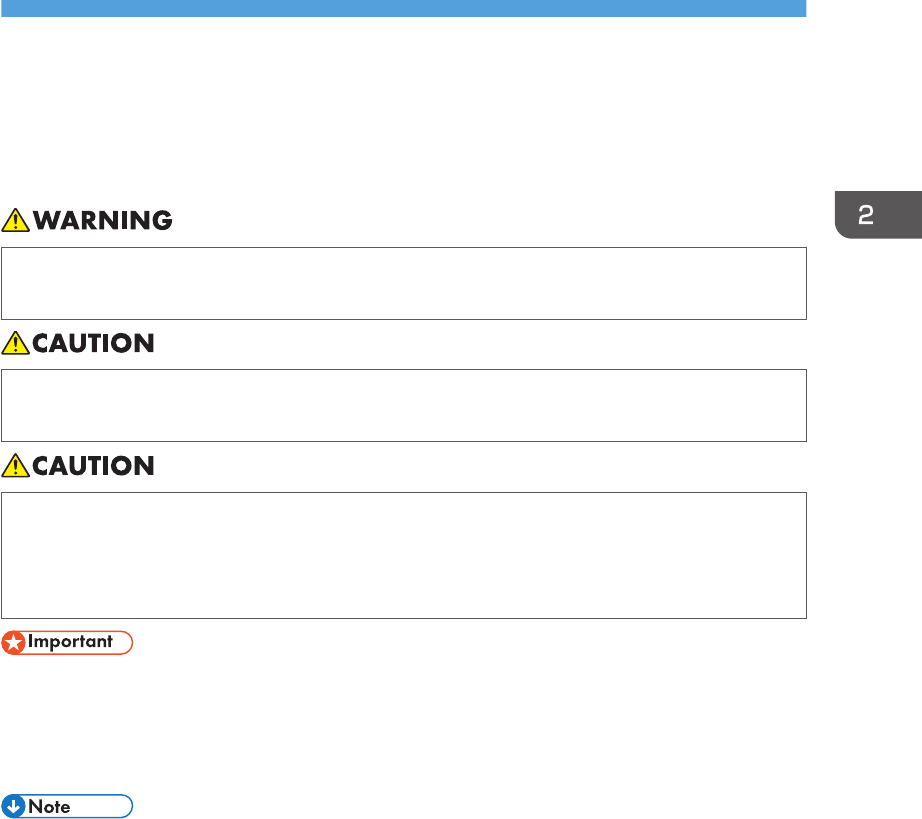
2. Projecting an Image
This chapter explains the procedure for projecting an image.
Basic Operations
• Do not look into the projection window or vent when the product is on. The bright light may
damage your eyes. Be especially careful in an environment with children.
• Do not place low heat resistant material near the exhaust vents. Hot air may come from the
exhaust vents, resulting in damage to the product or an accident.
• Do not block the projection light when it is on. If you do so, the part that is blocking the
projection light may get quite hot and deform, deteriorate or cause a burn or fire. The reflected
light may make the projection window hot and cause a product failure. To temporarily suspend
projection, select the mute function. To suspend longer, turn off the product.
• Unplug the power cord if the projector will not be used for an extended period of time.
• If the lamp is used for an extended period of time, it may not light up or the image may become
dark. If this happens, replace the lamp. In some rare cases, the lamp's brightness may vary slightly
due to the characteristics of a lamp.
• The projector supports various RGB signals, but signals that are not WXGA signals are expanded
or compressed when displayed and the image quality is slightly decreased. We recommend setting
the computer's output to WXGA to get better image quality.
• The motion of images in videos projected using the DVD software on a computer may seem
unnatural.
• Connect the projector and equipment before using the projector. For details, see p.23 "Connecting
Equipment to the Projector".
• If [Key Lock] in [Default Settings] is specified as [On], you cannot operate the projector from its
control panel. Use the remote control.
• If you press a button that is disabled, the projector beeps and an error icon appears on the screen.
• If [Beep] in [Default Settings] is specified as [Off], the projector does not beep.
27


















